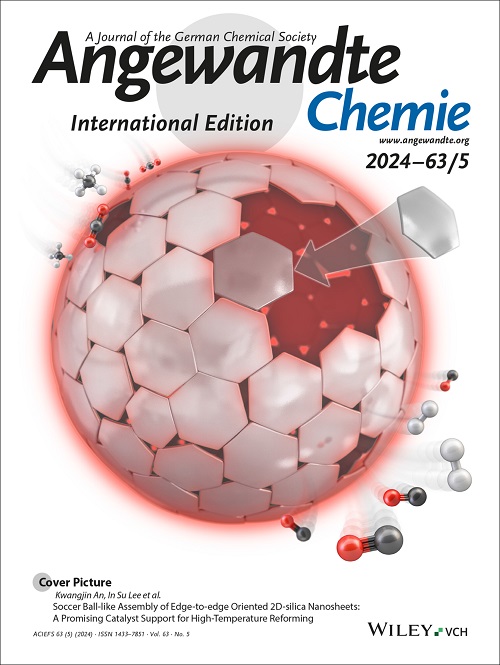Revealing the correlation of loading-to-performance of single atom catalysts.
IF 16.9
1区 化学
Q1 CHEMISTRY, MULTIDISCIPLINARY
引用次数: 0
Abstract
The correlation between mental loading and overall catalytic performance remains elusive for single-atom electrocatalysts (SACs), which hinders the oriented optimization of active site densities and scalable synthesis of them. To effectively address this issue, Ru single atoms with different loading are anchored on the graphene-like framework and tungsten carbide substrate (WC1-x) to investigate the synergistic effect among different local configurations. X-ray absorption spectroscopy demonstrated that the loading of Ru atoms critically governs the interatomic distance between adjacent metal active sites at second shell coordination. In-situ Raman spectroscopy shows that WC1-x nanoparticles can break the hydrogen bond network by reorienting H2O molecule adsorption and promoting the availability of active H2O among electrode-electrolyte interface. Density functional theory calculations demonstrated that the moderate distance between active sites could further lower the reaction barrier and enhance the catalytic activity. Consequently, the optimal sample Ru-WC1-x with 0.76 wt% Ru loading exhibits a low overpotential of 7 mV at 10 mA×cm-2 and the anion exchange membrane electrolyzer to stably operate for 100 h at 1 A×cm-2. Such correlation of spatial effects between different active sites were universally demonstrated in similar systems anchored with either Pt, Ir or Co elements.揭示单原子催化剂负载与性能的关系。
单原子电催化剂(SACs)的负载与整体催化性能之间的相关性尚不清楚,这阻碍了活性位点密度的定向优化和它们的可扩展合成。为了有效解决这一问题,我们将不同负载的Ru单原子锚定在类石墨烯骨架和碳化钨衬底(WC1-x)上,研究不同局部构型之间的协同效应。x射线吸收光谱表明,钌原子的负载对第二壳层配位上相邻金属活性位之间的原子间距离有重要影响。原位拉曼光谱结果表明,WC1-x纳米颗粒可以通过改变H2O分子吸附方向,促进活性H2O在电极-电解质界面的可用性,从而破坏氢键网络。密度泛函理论计算表明,适当的活性位点间距可以进一步降低反应势垒,提高催化活性。因此,Ru负载为0.76 wt%的最佳样品Ru- wc1 -x在10 mA×cm-2下具有7 mV的低过电位,阴离子交换膜电解槽在1 A×cm-2下稳定运行100小时。在以Pt、Ir或Co元素锚定的类似体系中,不同活性位点之间的空间效应的相关性得到了普遍证明。
本文章由计算机程序翻译,如有差异,请以英文原文为准。
求助全文
约1分钟内获得全文
求助全文
来源期刊
CiteScore
26.60
自引率
6.60%
发文量
3549
审稿时长
1.5 months
期刊介绍:
Angewandte Chemie, a journal of the German Chemical Society (GDCh), maintains a leading position among scholarly journals in general chemistry with an impressive Impact Factor of 16.6 (2022 Journal Citation Reports, Clarivate, 2023). Published weekly in a reader-friendly format, it features new articles almost every day. Established in 1887, Angewandte Chemie is a prominent chemistry journal, offering a dynamic blend of Review-type articles, Highlights, Communications, and Research Articles on a weekly basis, making it unique in the field.

 求助内容:
求助内容: 应助结果提醒方式:
应助结果提醒方式:


